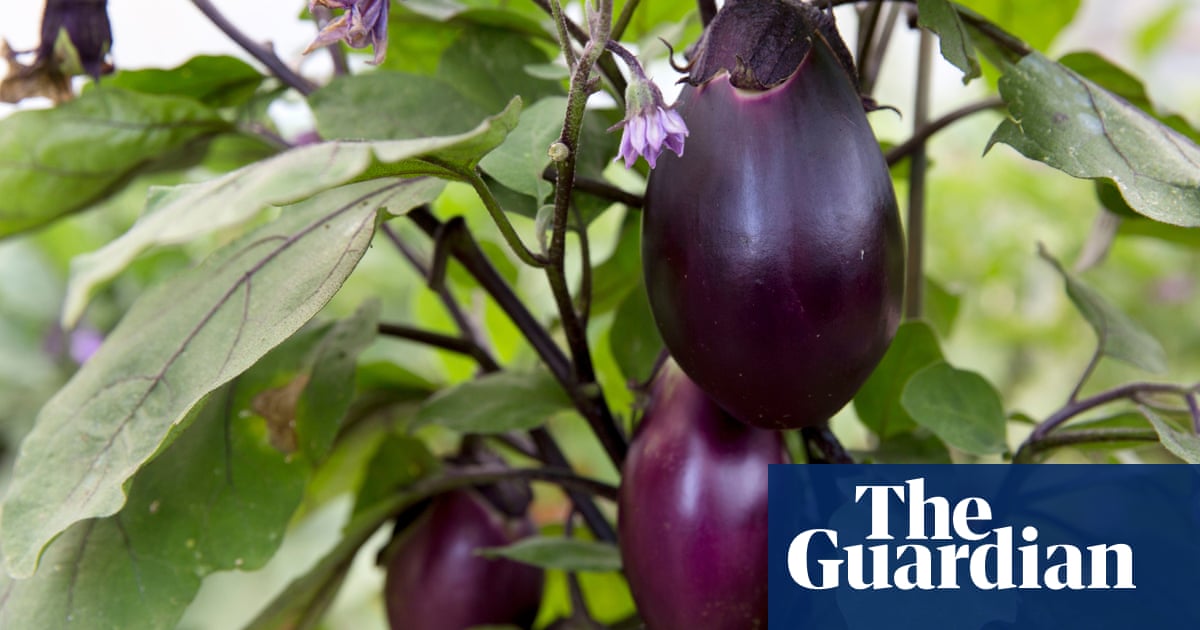
Ihave a pet peeve that I share with a lot of gardener friends: the social media-driven push to start sowing seeds now, even though it’s simply too early for most of us. Buoyed by the memory of generously warm springs – like that of 2020 – we could be forgiven for being optimistic and sow seeds in the hope that this coming spring will be just as ideal for our early crops. But British weather is unpredictable, so why plant seeds now when those sown later will probably fare better? This is true for the vast number of crops that I’ll be sowing when the daffodils are in full bloom.
But there are notable exceptions – and one is the aubergine. This vegetable was at the heart of the Mauritian cooking I grew up on, and so came to associate it with warmer climates, but it’s very possible – and very satisfying! – to grow aubergines in the UK.
Come the start of summer they’ll hit their stride, producing ample leaves followed by pretty lilac flowers
Aubergine seeds ought to be started in February, as this gives them the best chance of reaching the point of harvest before autumn arrives. Like their fellow nightshades, the tomato and the chilli, aubergines need warmth to germinate, so start your seeds in a propagator, on a heated seedling mat or in an airing cupboard. But once they germinate, it’s essential to position your seedlings where they can get as much sunlight as possible.
Sadly, my greenhouse is far too cold and my windowsills aren’t bright enough, so I use grow lights to ensure my seedlings don’t become weak and leggy. Since it isn’t possible for every grower to provide these conditions, I’m a big fan of outsourcing this task to the pros and ordering plug plants.
Aubergines need generous watering, nutritious soil or compost and warmth to prosper, so once my plants are large enough I give them a coveted spot in my small greenhouse. They can be grown outside, but only if you have a sunny, protected spot for them. And dwarf varieties can be grown in large containers.
Come the start of summer, they’ll hit their stride and produce ample leaves, soon followed by pretty lilac flowers heavy with pollen. They need the assistance of pollinators for those flowers to transform into fruit, so, just in case, I mist them and use a small paintbrush to move their pollen from stamen to stigma.
Aubergines are ready to harvest when they’re plump and their skin is shiny – usually from midsummer onwards – though take care as their spines are surprisingly sharp and tricky to spot. I love to grow the variety “Long Purple”, as they’re most like the ones my parents grew up eating. And last year I had great luck with the “Czech Early”, which cropped abundantly.












